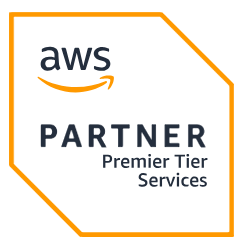Reframing the Challenge: When Growth Meets Complexity
A global construction and engineering major faced a modern paradox: despite digital tools, their most critical project decisions—on schedules, risks, and resource planning—still relied heavily on spreadsheets and high-cost expert reviews. With $15B+ in active projects and an expanding pipeline of mega-infrastructure builds, decision delays were no longer a minor inefficiency—they were a scaling risk.
The organization recognized that traditional approaches to managing complex construction workflows—dependent on tribal knowledge and fragmented systems—were no longer scalable. Each project team had its own playbook, leading to inconsistent decision quality and duplicated analysis.
That’s when the leadership team reframed the problem—not just as a workflow issue, but as a reasoning gap. They set a bold agenda: from gut feel to grounded foresight. Build an agentic platform to reason across complex inputs—so decisions on delays, risk response, and resource shifts could happen in real time, not in post-mortems.
Enter the Agentic Platform: Orchestrated Intelligence, Not Just Automation
The company partnered with Persistent Systems to co-engineer an agentic platform—modular, secure, and designed for scale.
Key goals:
- Identify schedule risks early and automatically
- Surface mitigation scenarios across multiple tools
- Codify expert decision logic into reusable agents
- Replace high-cost specialist reviews with agent reasoning
The flagship deployment? A dynamic Schedule & Risk Workbook—built using cutting-edge agentic patterns:
- A2A (Agent-to-Agent) Architecture: Enables multiple autonomous agents to communicate, reason, and co-operate
- MCP (Model Context Protocol): Integrates with tools and internal workflows
- Advanced RAG & Knowledge Graphs: Grounds generative outputs in structured, context-aware decision graphs
This wasn’t a digitization project dressed up as transformation. It was a reimagination of how decisions could be made in the field—linking expert logic with data flowing in from existing tools and systems.
That vision came alive through real-world deployments—especially within live schedule and risk workflows.
Real-World Impact: From Review Cycles to Real-Time Response
Unlike legacy dashboards that report the past, this platform proactively analyses current and projected delays—and recommends targeted interventions. Compared to prior manual reviews and disconnected tools, the new platform brings measurable speed and confidence to high-stakes project planning.
Benefits so far:
- 95% projected reduction in analyst effort, enabling faster, decentralized decision-making
- 20% faster project delivery and up to 30% cost savings expected for mega construction programs through early risk identification, intelligent schedule optimization, and smarter factory planning.
- Greater agility on ground: Site managers can act independently without awaiting remote expert input
- Improved risk posture: From reactive troubleshooting to proactive mitigation
- Optimized project workflows: By front-loading factory setups and surfacing early risk signals, projects can avoid downstream delays and cost overruns
As engineering and construction projects grow in size and complexity, leaders are increasingly turning to AI not just for automation—but for insight. Industry voices are beginning to reflect this strategic pivot. According to Deloitte, 70% of engineering and construction executives believe AI will significantly transform project planning and execution by 2026.
The approach shifted the needle from project reviews to real-time risk response.
Beyond the Pilot: Building for the Ecosystem
Encouraged by field success, the client has made a strategic move: transform the internal platform into a market-facing SaaS product. What began as an internal productivity engine is now on track to reshape the sector’s digital backbone.
With Persistent’s help, they’re now positioning the solution for external customers in:
- Urban infrastructure and smart city projects
- Large-scale mining and utilities
- Government-led infrastructure planning
The GTM roadmap includes marketplace partnerships and system integrator alliances—marking a shift from operational improvement to industry influence. The platform was designed not just to scale, but to reduce the industry’s dependency on costly specialist inputs—turning complex reasoning into reusable logic.
Why This Matters: From Tools to Thinking
While many agentic platforms focus on IT toolchains, this one is built for high-value, high-variance decisions in the physical world.
What sets it apart:
- Agent Reasoning over Task Automation
- Contextual Knowledge over Static Rules
- Real-time Guidance over Post-hoc Reports
This isn’t just one firm’s story—it’s indicative of a larger transformation unfolding across the industry. According to McKinsey, construction companies using AI in planning and preconstruction can reduce cost overruns by 10–15%. As the rollout expands, the platform is being evaluated for use across additional geographies and joint-venture projects—making it not just a proprietary advantage, but a strategic differentiator in the global construction arena. The agentic approach changes that baseline—embedding intelligence into the tools, workflows, and decisions that shape real-world infrastructure.
Replacing instinct with intelligence—at scale.
Built with Persistent: Platform Thinking, Delivered
Persistent’s role extended from vision to velocity:
- AI-first architecture design and agentic workflow integration
- Cloud-native engineering with governance and reusability
- Scalable foundation for SaaS productization
This is more than a platform. It’s a blueprint for how construction leaders can future-proof their decision core.
Rethink decision velocity. Rebuild with Persistent.




